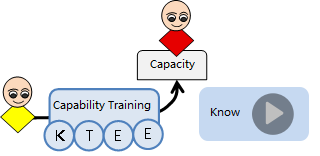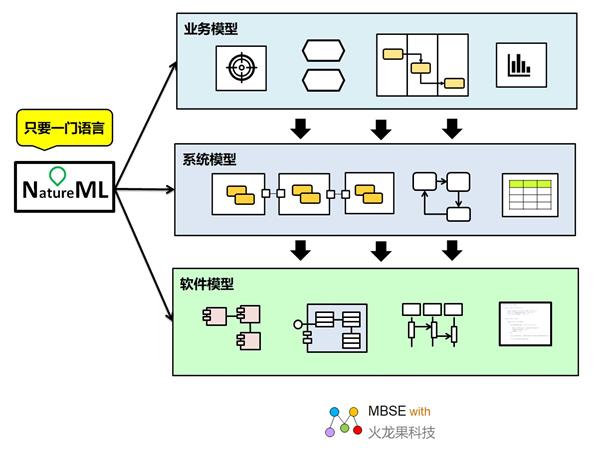|
|
| Successful Case
|
| Continental Automotive Electronics |
| Bosch Automotive Electronics |
| Schaeffler electric drive |
| Joyson Automotive Electronics |
| Huawei Technical Center |
| BMW Automotive Research and Development Center |
| Geely Auto Research Institute |
| Byd Automotive Research Institute |
| |
|
|
|
|
|
|
| Courses > Modeling |
|
 |
|
System Analysis and Modeling using NML |
Views 
|
|
 |
|
| Zu Tao
|
| Founded uml.org.cn in 2001, 2005 IBM Rational User Group Best Speaker |
| |
|
|
| Time Location: Beijing, Shenzhen and Shanghai open classes based on registration |
| Course CostпЉЪ1300 $/Person
|
|
|
|
| Internal Training: You can customize internal training according to the needs of the enterprise. |
|
 |
Authentication Method:
Understand the competency model before training.
Ability evaluation after training:
Online Examination
Ability Analysis, give learning suggestions
The qualified person shall be issued a certificate as proof of vocational skill qualification
|
 |
|
|
As Software becomes more and more complex, its scale and content become larger and larger, how to effectively model the business, refine the domain model, and conduct analysis and design based on the domain becomes more and more important for the sustainable accumulation ability of Software. This course first explains how to clarify the business through business modeling, and then explains how to extract the domain model from the business model, transition to domain analysis, carry out domain-driven design, achieve orderly Software design, and reverse the domain model of the existing system to help identify problems and carry out effective reconstruction. |
 |
| |
In engineering, natural language is the most important formal basis for description, so NML pays full attention to natural language. NML (Nature Modeling Language) is an intermediate modeling language between natural language and modeling in various professional fields. The purpose is to evolve the basic form of human description, form logical thinking ability, improve professional independent analysis and design ability, and then support the analysis and design of various professional fields, and provide model mapping for systems and software. |
 |
| |
This course will provide a comprehensive analysis of the NML language from four aspects by the creators of NML:
вАҐ Creation of NML language
вАҐ NML semantic architecture
вАҐ NML syntax system
вАҐ NML modeling applications
Let modelers have a thorough understanding of modeling language, and can be applied to business analysis design, data analysis design, system analysis design, software analysis design, and then improve the overall modeling ability. The course will incorporate modeling practices with the NML modeling tool iSpace, demonstrating case practices for learning languages and tools by reviewing specific projects. |
| |
course Features
|
1. Teaching by senior experts, interactive case teaching, real combat simulation project operation.
2. Master NML modeling technology through practice exercises.
3. Combine theory with practice and pay attention to the explanation of cases.
4. Have profound theoretical depth and accurately grasp the normative semantics of NML.
5. Full case explanation, students learn while doing, specific and profound.
6. Consult cases proposed by students to guide analysis and design.
|
Training Goal
|
By the end of this course, participants should be able to learn: What is NML
- What is NML
- Why do you need NML
- Relationship between NML and other modeling languages
- What does NML have
- NML modeling perspective
- Basic model of NML modeling
- Basic model of NML modeling
- Analytical design practices using NML
- requirement modeling
- System analysis
- System design
- System simulation
- Transition from system requirements to software requirements
- Model-based tracking and management
|
| Training Target: System engineers, requirements researchers, development engineers, technical solution personnel |
| Student Foundation: Experience in project development or requirements |
| Teaching Method:
Customized Course + Case Explanation + Group Discussion, 60% Case Explanation, 40% practice exercise |
| Training Content: 2 Days
|
NML Introduction
|
What is NML
Why do you need NML
Relationship between NML and other modeling languages
What does NML have
NML modeling perspective
Implementation of MBSE effectiveness using NML
|
| Introduction to the NML modeling tool iSpace |
Features of iSpace
Supported modeling languages
Extended function
Model tracking
Modeling coordination
Document automation
Model-based simulation |
| NML core diagram analysis |
Text modeling: diagrams, elements, relationships
Entity modeling: diagrams, elements, relationships
Behaviour modeling: diagrams, elements, relationships
Data modeling: graphs, elements, relationships
iSpace Modeling: Diagrams, elements, relationships |
| Introduction to WML |
Workflow diagram
Character map
Job drawing |
| NML analysis and design method |
Look at things from an NML perspective
The basic elements of objective things
The basic relations of objective things
Conceptual analysis from multiple perspectives
The relationship between entity, behavior, data and space |
| Analytical design practices using NML |
| Requirement modeling |
Classification of requirements
Hierarchy of needs
Requirements analysis method
Requirements Modeling Practices (NML based)
User requirements modeling methods
Business requirements modeling methods
System requirements modeling method |
| System analysis |
The goal of system analysis
Methods of systematic analysis
System Analysis Modeling Practice (based on NML) :
System function analysis and modeling
System performance analysis and modeling
System interface analysis and modeling
System reliability analysis and modeling
System extension analysis and modeling
System security analysis and modeling |
| System design |
The goal of system design
Method of system design
System Design Modeling Practice (based on NML) :
system module partitioning
System interface design
System behavior design
System interaction design
System performance and reliability design |
| System simulation |
The goal of system simulation
Method of system simulation
Model-based System Simulation Practice (NML based) :
Functional simulation
Scene simulation
State simulation
Integrated simulation |
| Transition from system requirements to software requirements |
The relationship between system requirements and software requirements
Mapping of system requirements and software requirements
How to transition from system requirements to software requirements
The tracking relationship between the two |
| Software requirement modeling |
Goals for software requirements
Software requirements approach
Software requirements Modeling Practice (NML based) :
Software function analysis and modeling
Software performance analysis and modeling
Software reliability analysis and modeling
Software extension analysis and modeling |
| Software design modeling |
The goal of software design
Methods of software design
Software Design Modeling Practice (NML based) :
Software architecture Design
Software component design
Software interaction design
Software operation design
Software performance and reliability design |
| Model-based coding |
Mapping between software design model and software code
NML design model and code mapping
Generate structural code from the software design model
Generate behavioral code from the software design model
Reverse engineer the model from code
How to maintain consistency between model and code |
| Model-based testing |
Test goal
Types of tests
Model-based testing (NML based)
unit testing
Integration testing
System test |
| Model-based automated documentation |
A model-to-document automation approach
Generate documents based on the model
Establish model and document traceability
How to maintain consistency between models and documents |
| Model-based tracking and management |
Build a trace chain based on the model: requirements, systems, software, tests
Generate a trace list based on the model
Establish a baseline for the model
Work planning and tracking based on model
Analyze the impact scope of the change based on the model
Model-based configuration management |
|
| |
|
|
|
|
|
| Consulting Objective
|
Help build model-driven analysis, design, development, testing |
| Scope Consultation |
Requirements Modeling, Architecture Modeling, Database Modeling, Code Modeling, Test Modeling.
|
| Consultation Method |
Model-driven development process training, modeling and management tool environment construction, combined with actual customer case demonstration, team practice guidance, model evaluation standards formulation, specification formulation |
| Successful Case |
Huawei Research and Development Center, Space Center of Chinese Academy of Sciences, Nanjing 14 Institute, China Mobile Research Institute and so on. |
| For more information:010-62670969пЉМ umlooo@hotmail.com
|
|
|
|
|